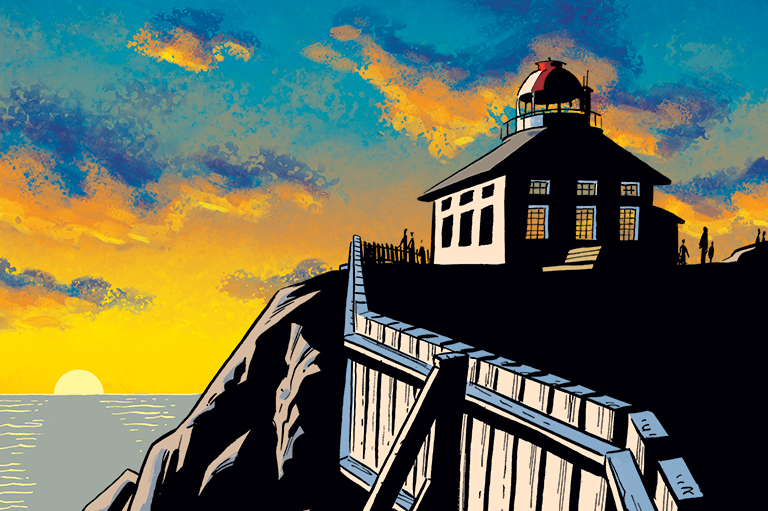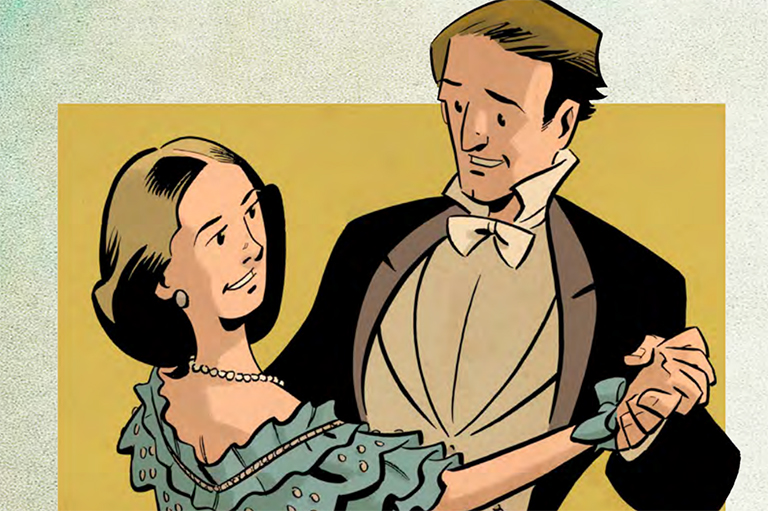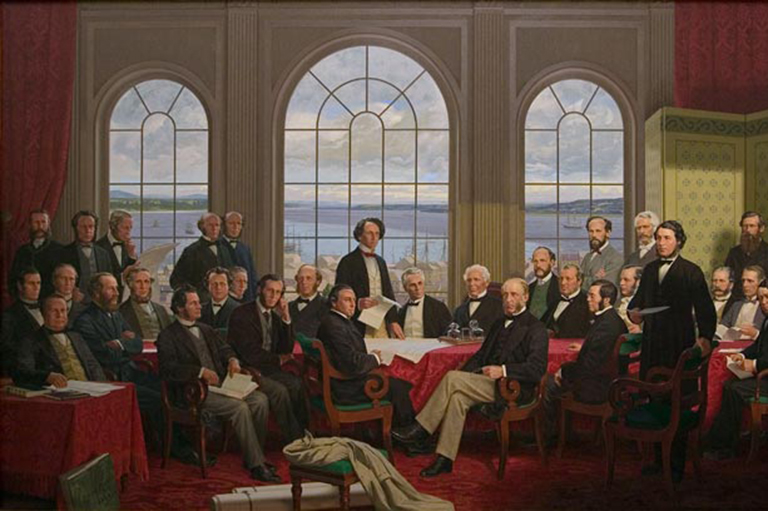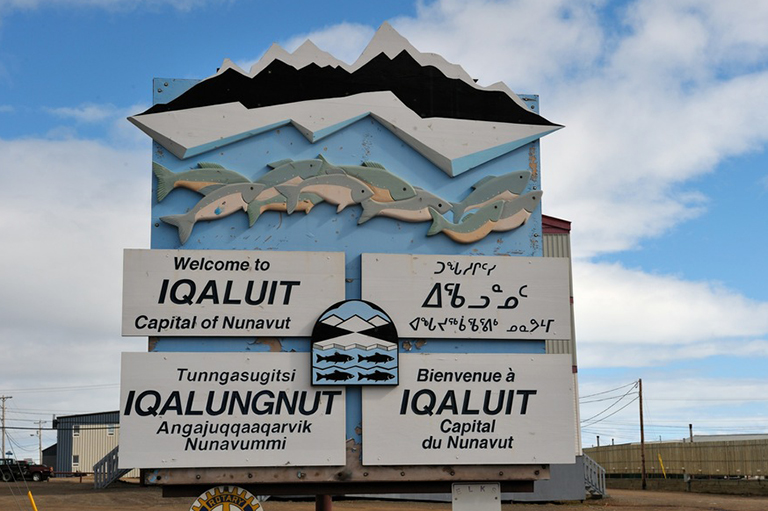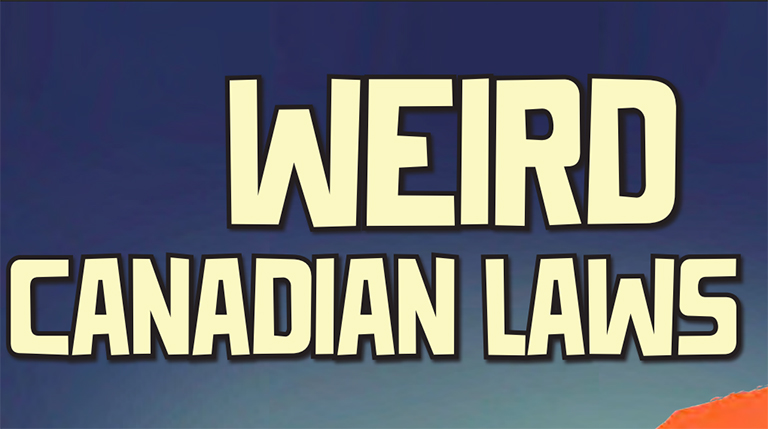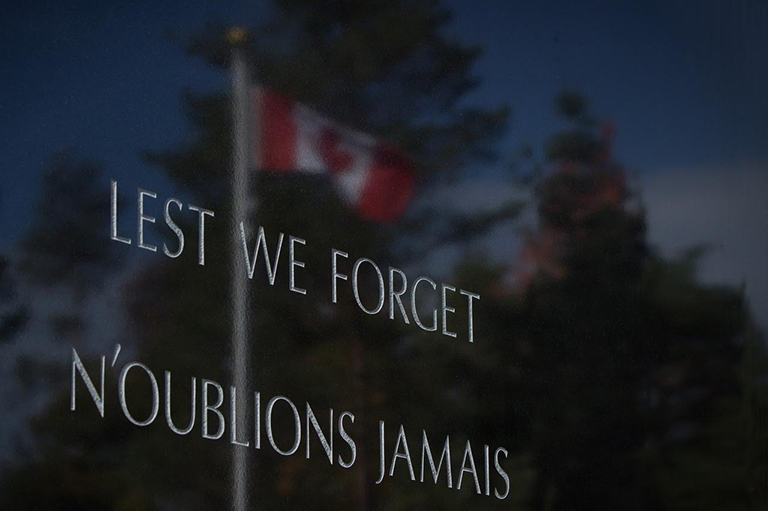The Will of the People
Grade Levels: 5/6, 7/8
Subject Area: Social Studies, History, Civics, Language Arts
This lesson plan is inspired by the article “Built on Friendship,” in the Summer 2017 issue of Kayak: Canada’s History Magazine for Kids.
Lesson Overview
This lesson introduces students to the principles of responsible government for which LaFontaine and Baldwin fought. It exposes the structures of the governments of Upper and Lower Canada before the Rebellions that inspired the quest for responsible government and would eventually for the basis of Canada’s governmental system. This lesson can be adapted for multiple grade levels.
Time Required
3 x 45 minutes (or can be adapted)
Historical Thinking Concept(s)
This lesson plan uses the following historical thinking concepts: establish historical significance, identify continuity and change, analyze cause and consequence, and take historical perspectives.
Learning Outcomes
Student will:
- Identify the governing characteristics of groups such as the Family Compact or the Chateau Clique, who ruled Upper and Lower Canada prior to the Rebellions.
- Infer the chief characteristics of responsible government as developed through LaFontaine and Baldwin’s quest for responsible government.
- Interpret the principles of responsible government and of democracy as practiced in Canada, in a classroom setting.
- Develop principles for responsible government in small or in larger groups.
Background Information
In the 1840s, the Canadian state was governed quite differently than it is today. Rather than the party which occupies the most seats leading government, there were no official parties. There was an elected Assembly, but the executive branch of the Government—the Prime Minister and federal cabinet today—responsible for directly advising the appointed Governor, was not drawn from those elected to the Assembly. Instead, the Governor’s executive council was handpicked by the Governor, who had the power to appoint or to dismiss advisors as well as to veto legislation at will.
Politicians were becoming frustrated, realizing that under this system, their election might have no impact on how the colony was actually governed. Reformers led the push for responsible government, while many others argued against this development. For the most part, the reasons were economic. Reformers felt as though reorganizing the government under the principles of responsible government, where the executive branch would be responsible to the elected Assembly, would help promote certain economic projects that were being stalled under the old system.
Robert Baldwin and Louis-Hippolyte LaFontaine decided that by uniting for these common aims in a coalition, a new kind of government could be achieved. Baldwin, an unlikely and atypical politician, was governed by a high sense of moral duty. He argued that the Reformers fought for Canada against her oppressors who would deny the colony its rightful power. LaFontaine was brilliant and ambitious, but often at odds with the more radical Patriotes, with whose aims he agreed while maintaining his stance on non-violence.
Together, Baldwin and LaFontaine also began the coalition of French and English leaders that would be characteristic of Canadian government for a long time afterward. After the 1841 Act of Union, which united Upper and Lower Canada, Baldwin and LaFontaine worked together to found a united party of reformers. LaFontaine, who had believed that union with the former Upper Canada would be key in achieving peace, had been kicked out of his own government for working with the English. Robert Baldwin invited him to run in his own riding of York, where LaFontaine was elected with Baldwin’s support.
On January 24, 1848, the Reform Party swept the election under the leadership of Robert Baldwin and Louis-Hippolyte LaFontaine. James Bruce, known by his title of Lord Elgin, was the British-appointed Governor at the time. Following the election, he invited LaFontaine to form the government. LaFontaine accepted on condition that his friend and ally Baldwin be co-premier.
Soon after, in 1849, Baldwin and LaFontaine put the principle of responsible government to the test when they presented the Governor with a new piece of legislation. Although wildly unpopular among many, the Rebellion Losses Bill of 1849, which proposed to compensate Lower Canadians whose property had been damaged during the Rebellions of 1837-38, was an act of equality for Baldwin. He argued that the English residents of Upper Canada had similarly been compensated, and that the French residents of Lower Canada deserved the same. The bill was unpopular in many circles, particularly among those who staunchly opposed the French resisters. Those in opposition to the bill felt that the French were disloyal, as well as were suspicious of their linguistic and religious differences. Despite the bill’s unpopularity in many circles, Lord Elgin was forced to approve it, even though he was attacked in the streets by mobs and the parliament buildings in Montreal were burned to the ground in protest. In addition, the British government stood behind the Governor, indicating an important change in the constitutional relationship between the mother country and Canada. England would no longer interfere in the internal affairs of the elected government of its colony.
The Baldwin–LaFontaine ministry of 1848 accomplished a great deal, in addition to the Rebellion Losses Bill. It established a new public school system, founded the University of Toronto, and worked actively to build new alliances and relationships between English and French. While the principle of responsible democracy did not necessarily mean that the government was made fully accountable to the electorate, it certainly set Canada on its path to political independence from Britain. It also helped reassure French-Canadians that their future could be found in the union.
The Lesson Activity
Activating
1. Assignment of roles
The teacher will assign the following roles:
- Grand Supreme Ruler (may be the teacher)
- Council of Three (three students chosen at random)
- All the rest of the class comprises the Assembly of the People
2. Presentation of scenario
The year is 2072, and the planet Earth has become too crowded. A new colony has been established on the planet Mars, and 1,000 humans from Earth have now established a new colony there.
The government of the colony consists of a Grand Supreme Ruler. He/she reports back to Earth on the progress of the settlers.
The actual business of ruling is done by a small group of people called the Council of Three. These three people are chosen by the Grand Supreme Ruler and have not been elected by the citizens of the colony.
(xx – rest of class number) are the Assembly of the People. They have been elected by the colonists to represent the citizens of the colony.
The time has come to set a few rules for the colony. The rules are very important, and students who are members of the Assembly of the People and of the Council of Three will need to decide on the following:
a) The colony can only bring in a few items from the following list, since it’s hard to store things on Mars. They have to choose two of the following:
Pizza — Hot dogs — Macaroni — Fresh fruit — Salads — Water
b) All citizens of the colony pay taxes, but they have to decide what to spend the money on. They can only choose one of the following:
New houses — Roads — Giant water holding tank — Dust control dome
c) There are not a lot of resources on Mars, and the citizens have to choose if having more people will help or hurt them. They have to vote Yes or No on a proposal to bring in 1,000 more settlers. While these people might help to build up the colony, it will also mean less food and resources for the others. Vote Yes or No on the proposal.
***OPTION: Older students may wish to design their own choices or questions.***
Acquiring
3. Setting up the debate
Depending on the group, the teacher may wish to set up a debate for students to argue their case. This debate or analysis of the options given to the Assembly of the People may be conducted individually, using handouts provided, or in small groups, using handouts provided. Students should think through the advantages and disadvantages of each of the scenarios.
4. Voting
Upon conclusion of the analysis portion, the Grand Supreme Ruler, or a designate, will invite the Assembly of the People to vote on the measures proposed. Once the votes are tallied, the Council of Three will decide to accept or reject the recommendations of the Assembly of the People.
The Council of Three then considers the recommendations of the Assembly of the People against their own, and decides what they will present to the Grand Supreme Ruler. While they discuss, representatives of the Assembly of the people may engage in the design of a new colony flag that they feel best represents its goals.
The Council of Three then presents their recommendations to the Grand Supreme Ruler, who then accepts or rejects the decisions. If the decisions are rejected, he or she makes his or her own decision on the three items. The Grand Supreme Ruler is free to reject the recommendations of the Council of Three but must then impose and explain his or her own decision.
Applying
5. Discussion
The final decisions on these items will then be compared by the teacher, or else by the students themselves, to the results of the votes of the Assembly of the People.
After revealing the results, students should be encouraged to reflect on the following questions, depending on age/ability (The questions can and should be adapted to suit the group):
- What influence did the Assembly of the People actually have?
- Were the results of the decision fair?
- Did the results of the decisions represent the will of the Assembly? Why or why not?
- Should the decisions made have represented the will of the Assembly? Why or why not?
- Since the elected members were elected by and represent the citizens, what role should they play in the final decisions?
- Have students think about a time or situation where they were “responsible” for something (feeding a pet, doing a chore, etc.) – what might be being “responsible” look like in government?
6. Reading
- Have students read “Built on Friendship”, drawing comparisons from thescenario of Mars to the story.
Materials/Resources
- “Built on Friendship,” in the Summer 2017 issue of Kayak: Canada’s History Magazine for Kids
- Voting Ballot - Student Handout
- “The Friendship that Brought Responsible Government”
- “Rebellion Losses Bill”
- “Sir Robert Baldwin”
- “Sir Louis-Hippolyte LaFontaine”
Extension Activities
Students may be engaged in a simple mathematics activity in the tabulation of vote results, in the calculation of the proportion of votes for any given choice, and in an extrapolation of representativeness of the will of the population using the base number 1,000 for total population and referring to the number of students in the Assembly of the People.
Using the knowledge and understanding gleaned from the scenario, the story, and their discussion, students might be encouraged to create a representation of this knowledge in the form of a personal reflection; a journal from the perspective of a citizen of Mars, the Grand Supreme Ruler, or the Council of Three; an essay or research brief; or, a political cartoon.
Other extension activities include the drafting of their own system of governance or basic constitution, explaining why such a system is favourable and how it can work effectively.
Assessment
Assessment would be developed around the extension activities selected by the teacher.
Themes associated with this article
Advertisement
Related plans and resources

Canada’s History Archive, featuring The Beaver, is now available for your browsing and searching pleasure!

